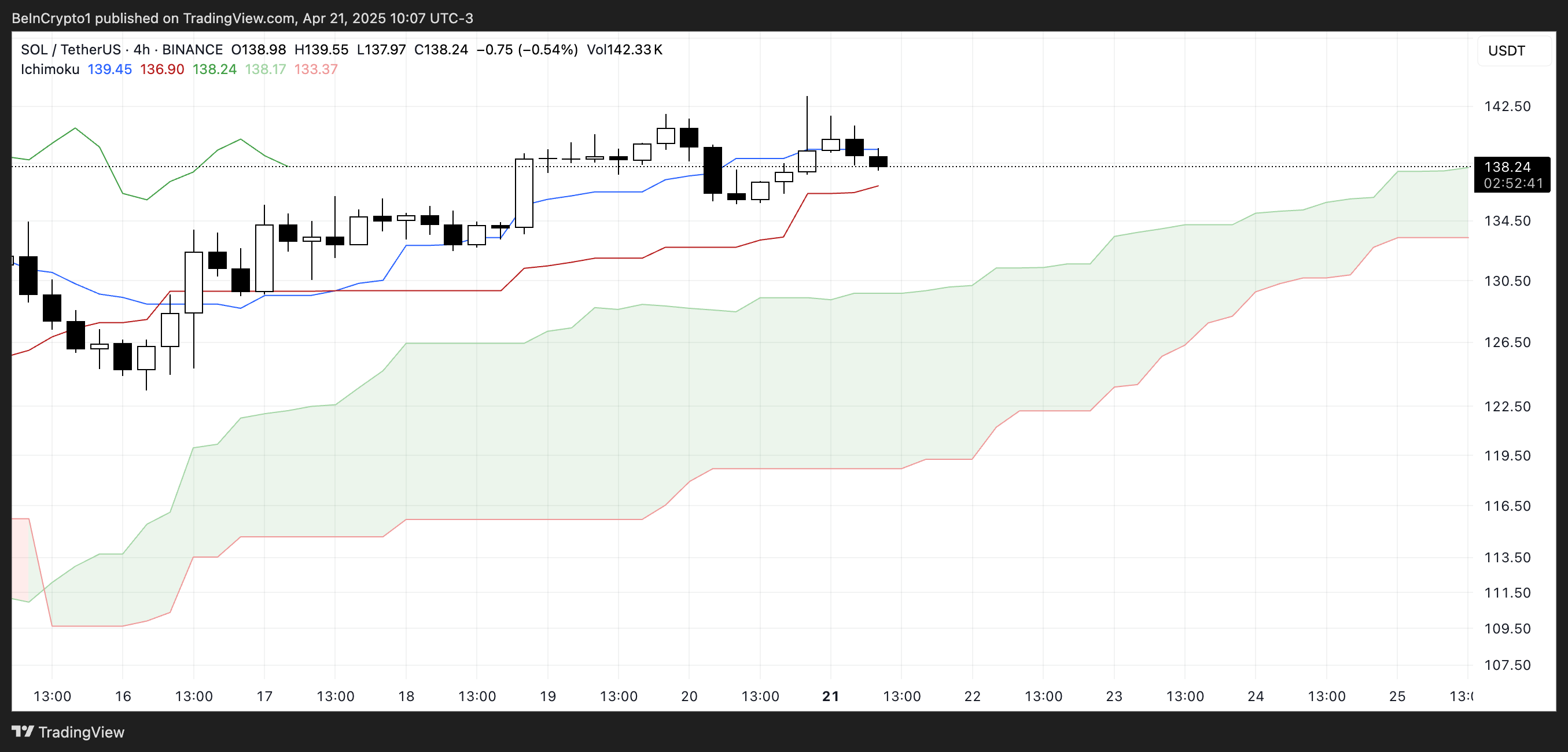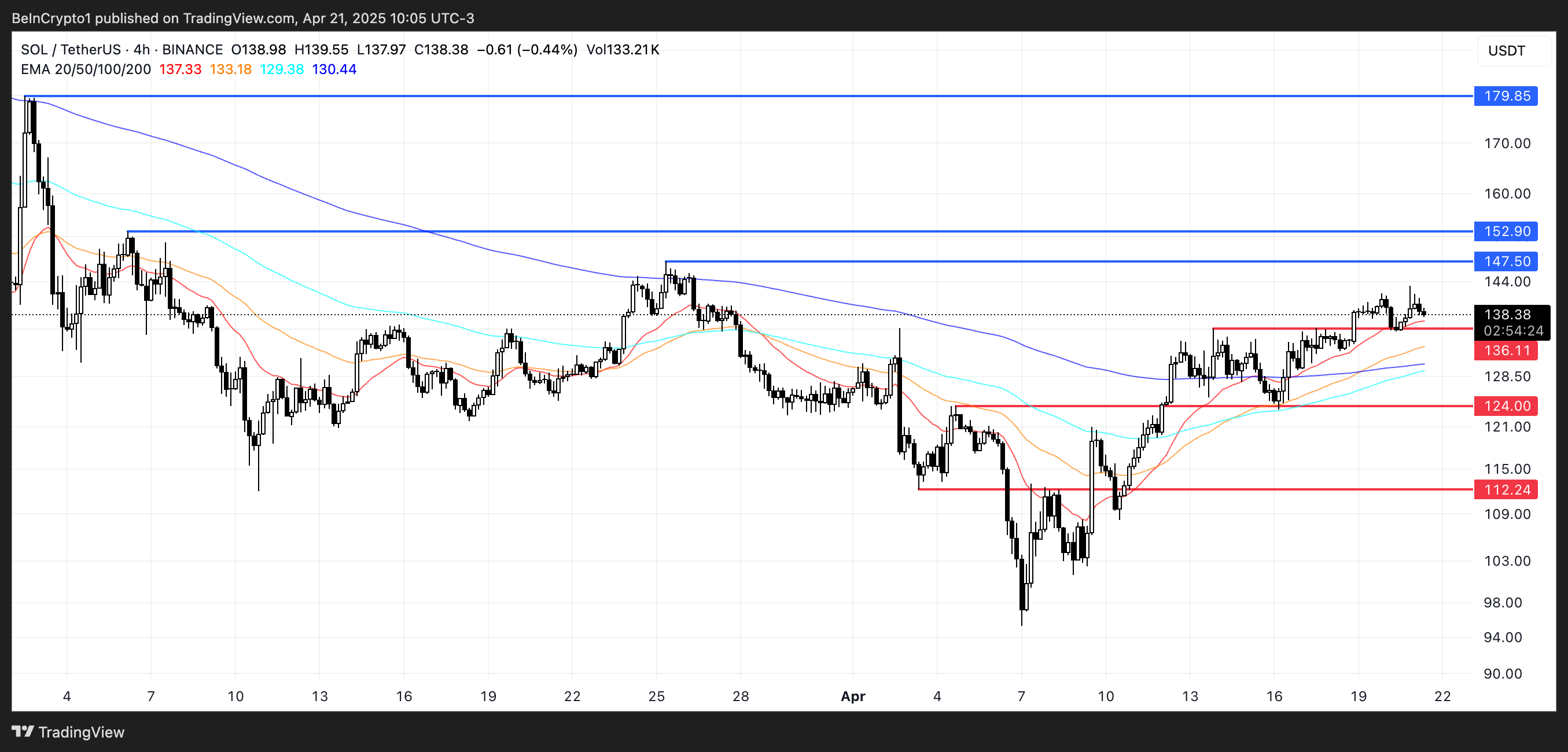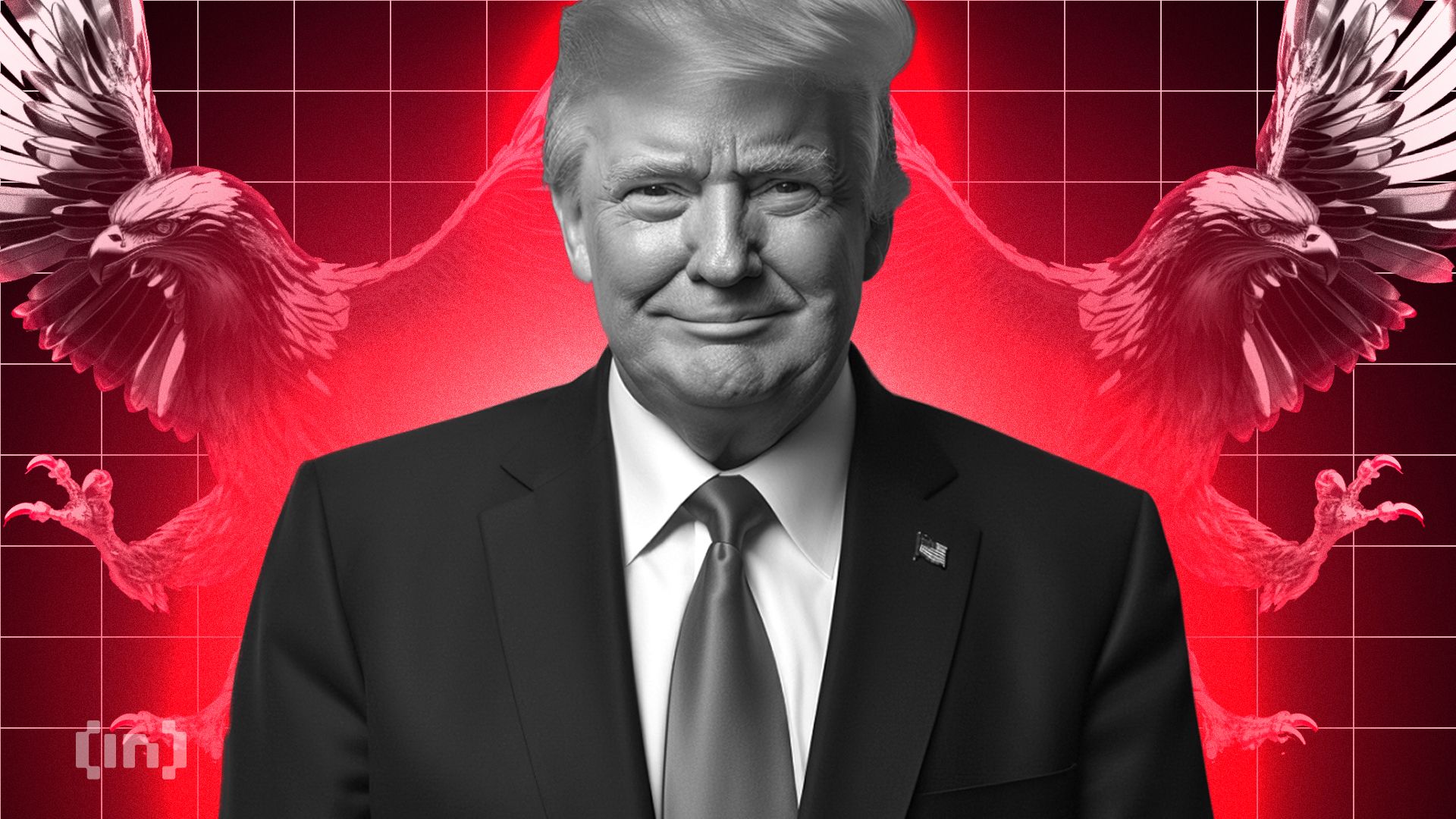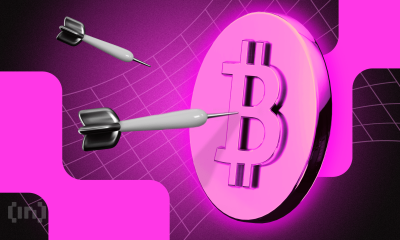Market
China’s De-Dollarization Boosts Bitcoin’s Global Role in 2025

China’s recent directive for its state-owned banks to decrease reliance on the US dollar has amplified a growing trend among countries seeking alternatives to the dominant reserve assets. In some instances, Bitcoin has emerged as a viable competitor.
BeInCrypto spoke with experts from VanEck, CoinGecko, Gate.io, HashKey Research, and Humanity Protocol to understand Bitcoin’s rise as an alternative to the US dollar and its potential for greater influence in global geopolitics.
The Push for De-Dollarization
Since the 2008 global financial crisis, China has gradually reduced its reliance on the US dollar. The People’s Bank of China (PBOC) has now instructed state-owned banks to reduce dollar purchases amid the heightened trade war with US President Donald Trump.
China is among many nations seeking to lessen its dependence on the dollar. Russia, like its southern neighbor, has received an increasing number of Western sanctions– especially following its invasion of Ukraine.
The United States, the European Union, the United Kingdom, and other allies imposed unprecedented international sanctions on Russia, targeting its central bank and major financial institutions and restricting access to the Society for Worldwide Interbank Financial Telecommunication (SWIFT) for some financial institutions.
In response, Russia halted trading of US dollars and euros on the Moscow Stock Exchange (MOEX). Recently, BeInCrypto also reported that Russia has been quietly using Bitcoin for international trade to bypass sanctions.
Furthermore, Rosneft, a major Russian commodities producer, has issued RMB-denominated bonds, indicating a shift towards RBM, the Chinese currency, and a move away from Western currencies due to sanctions.
This global shift away from predominant reserve currencies is not limited to countries affected by Western sanctions. Aiming to increase the Rupee’s international use, India has secured agreements for oil purchases in Indian Rupee (INR) and trade with Malaysia in INR.
The country has also pursued creating a local currency settlement system with nine other central banks.
As more nations consider alternatives to the US dollar’s dominance, Bitcoin has emerged as a functional monetary tool that can serve as an alternative reserve asset.
Why Nations Are Turning to Bitcoin for Trade Independence
Interest in using cryptocurrency for purposes beyond international trade has also grown. In a notable development, China and Russia have reportedly settled some energy transactions using Bitcoin and other digital assets.
“Sovereign adoption of Bitcoin is accelerating this year as demand grows for neutral payments rails that can circumvent USD sanctions,” Matthew Sigel, Head of Digital Assets Research at VanEck, told BeInCrypto.
Two weeks ago, France’s Minister of Digital Affairs proposed using the surplus production of EDF, the country’s state-owned energy giant, to mine Bitcoin.
Last week, Pakistan announced similar plans to allocate part of its surplus electricity to Bitcoin mining and AI data centers.
Meanwhile, on April 10, New Hampshire’s House passed HB302, a Bitcoin reserve bill, by a 192-179 vote, sending it to the Senate. This development makes New Hampshire the fourth state, after Arizona, Texas, and Oklahoma, to have such a bill pass a legislative chamber.
If HB302 is approved by the Senate and signed into law, the state treasurer could invest up to 10% of the general fund and other authorized funds in precious metals and specific digital assets like Bitcoin.
According to industry experts, this is only the beginning.
VanEck Predicts Bitcoin to Become a Future Reserve Asset
Sigel predicts Bitcoin will become a key medium of exchange by 2025 and, ultimately, one of the world’s reserve currencies.
His forecasts suggest Bitcoin could settle 10% of global international trade and 5% of global domestic trade. This scenario would lead to central banks holding 2.5% of their assets in BTC.
According to him, China’s recent de-dollarization will prompt other nations to follow suit and lessen their reliance on the US dollar.
“China’s de-dollarization efforts are already having second- and third-order effects that create opportunities for alternative assets like Bitcoin. When the world’s second-largest economy actively reduces its exposure to US Treasuries and promotes cross-border trade in yuan or through mechanisms like the mBridge project, it signals to other nations—especially those with strained ties to the West—that the dollar is no longer the only game in town,” Sigel said.
For Zhong Yang Chan, Head of Research at CoinGecko, these efforts could prove catastrophic for the United States’ dominance.
“Broader de-dollarization efforts by China, or other major economies, will threaten the status of the dollar’s global reserve currency status. This could have [a] profound impact on the US and its economy, as this would lead to nations reducing their holdings of US treasuries, which the US relies on to finance its national debt,” he told BeInCrypto.
However, the strength of the US dollar and other dominant currencies has already shown signs of weakening.
A General Wave of Currency Decline
Sigel’s research shows that the four strongest global currencies—the US dollar, Japanese yen, British pound, and European euro—have lost value over time, particularly in cross-border payments.
The decline of these currencies creates a void where Bitcoin can gain traction as a key alternative for international trade settlements.
“This shift isn’t purely about promoting the yuan. It’s also about minimizing vulnerability to US sanctions and the politicization of payment rails like SWIFT. That opens the door for neutral, non-sovereign assets—especially those that are digitally native, decentralized, and liquid,” Sigel added.
This lack of national allegiance also sets Bitcoin apart from traditional currencies.
Bitcoin’s Appeal: A Non-Sovereign Alternative
Unlike fiat money or central bank digital currencies (CBDCs), Bitcoin doesn’t respond to any one nation, which makes it appealing to some countries.
For Terence Kwok, CEO and Founder of Humanity Protocol, recent geopolitical tensions have heightened this belief.
“Trust in traditional financial infrastructure is eroded during geopolitical standoffs. Bitcoin, with its transparent ledger and decentralized governance, offers a compelling alternative for value storage and peer-to-peer settlement, especially where neutral, non-sovereign options are preferable. In that sense, geopolitical tension can inadvertently catalyze innovation and adoption in decentralized finance,” Kwok told BeInCrypto.
Because Bitcoin’s supply is limited, it provides a more secure option for nations whose local currency loses value through inflation.
“Bitcoin, due to its scarcity and decentralized nature, is completely different from the centralized fiat currency system and is not affected by changes in monetary policy. Therefore, it can be used as a hedging tool to cope with the depreciation of fiat currencies or geopolitical risks. Especially in the context of rising inflation or challenges to the dominance of the US dollar, allocating some Bitcoin can help diversify investment risks and provide investors with more robust asset protection,” Kevin Guo, Director of HashKey Research, added to the conversation.
For these same reasons, experts don’t expect Bitcoin to replace fiat currencies fully but rather provide a vital alternative for certain cases.
A Replacement or an Alternative?
While Bitcoin offers several advantages over traditional currencies, Gate.io’s Kevin Lee doesn’t foresee its eventual adoption causing a complete overhaul of the currency reserve system.
“Bitcoin is increasingly being recognized for its unique technological characteristics, such as fixed supply, decentralized governance, and borderless accessibility. However, I don’t believe it is meant to replace [the] traditional fiat system, but rather an alternative to it for various business use cases, particularly for diversification and long-term value preservation strategies,” Lee told BeInCrypto.
Guo agreed with this last point, adding that Bitcoin will be more appealing case-by-case.
“Countries may selectively adopt Bitcoin based on their own economic needs, but its application areas are mainly concentrated in niche markets such as cross-border remittances, circumventing sanctions, and hedging inflation,” he said.
Bitcoin must first address several of its shortcomings before it can become truly competitive in the long run.
What Challenges Still Face Bitcoin’s Wider Adoption?
Due to its relatively new status and lack of full development, Bitcoin suffers from shortcomings that prevent mass adoption.
“As with any emerging asset class, Bitcoin faces inherent challenges, including market volatility, evolving regulatory frameworks, infrastructure maturity, and cyclical hypes. These factors may impact its short-term adoption pace,” Lee explained.
To that point, Kwok added:
“Bitcoin’s price swings make it less viable for day-to-day transactions or as a primary reserve asset today. Furthermore, if major powers enforce strict capital controls or implement hostile crypto policies, it could slow down adoption despite broader macro trends in its favor.”
Meanwhile, there’s the competitive advantage of stablecoins, which currently dominate cross-border payments.
“Crypto assets represented by US dollar stablecoins (such as USDT and USDC) are rapidly occupying the main market of cross-border payments and blockchain transactions. Stablecoins have low volatility due to their peg (mostly to the US dollar), making them the preferred tool for international transactions and fund transfers, while Bitcoin is more often used as a store of value or speculative asset,” Guo, Director of HashKey Research told BeInCrypto.
The Bitcoin network has also experienced problems that have exacerbated global demand.
Bitcoin Network Under Strain
Since the beginning of the year, Bitcoin has experienced a significant slowdown in network activity, despite the asset’s bullish performance.
“The usage rate of the Bitcoin network is declining, and its on-chain transaction fees have dropped to the lowest point since 2012, indicating that network activity is gradually decreasing,” Guo said.
Recent data confirms this. The number of Bitcoin transactions has fallen significantly since the last quarter of 2024. Bitcoin registered over 610,684 transactions in November, but that number dropped to 376,369 in April, according to Glassnode data.

The number of Bitcoin active addresses paints a similar picture. In December, the network had nearly 891,623 addresses. Today, that number stands at 609,614.

This decline suggests reduced demand for its blockchain in terms of transactions, usage, and adoption, meaning fewer people are actively using it for transfers, business, or Bitcoin-based applications.
Meanwhile, the Bitcoin network must also ensure its infrastructure is efficient enough to meet global demand.
Can Bitcoin Scale for Global Use?
In 2018, Lightning Labs launched the Lightning Network to reduce the cost and time required for cryptocurrency transactions. Currently, the Bitcoin network can only handle around seven transactions per second, while Visa, for example, handles around 65,000.
“If expansion solutions (such as the Lightning Network) fail to become popular, Bitcoin’s ability to process only about 7 transactions per second will be difficult to support global demand. At the same time, as Bitcoin block rewards are gradually halved, the decline in miners’ income may threaten the long-term security of the network,” Guo, Director of HashKey Research explained.
While the confluence of geopolitical shifts and Bitcoin’s inherent characteristics undeniably create a space for its increased adoption as an alternative to the US dollar and even a potential reserve asset, significant hurdles remain.
Achieving mainstream Bitcoin adoption hinges on overcoming scalability, volatility, regulatory hurdles, stablecoin competition, and ensuring network security.
The unfolding panorama suggests Bitcoin will carve out an important role in the global financial system, though a complete overhaul of established norms seems unlikely in the immediate future.
Disclaimer
Following the Trust Project guidelines, this feature article presents opinions and perspectives from industry experts or individuals. BeInCrypto is dedicated to transparent reporting, but the views expressed in this article do not necessarily reflect those of BeInCrypto or its staff. Readers should verify information independently and consult with a professional before making decisions based on this content. Please note that our Terms and Conditions, Privacy Policy, and Disclaimers have been updated.
Market
Report Alleges Massive Meme Coin Sniping on Pump.fun

According to a new report from Pine Analytics, token deployers on Pump.fun systematically funded sniper wallets to buy their own meme coins. This impacted over 15,000 token launches on the platform.
These sniper wallets operated primarily during US trading hours, executing standardized, profitable strategies. Unrelated bot activity obscures their behavior, making it extremely difficult to isolate these wallets—and they can readily adapt to new countermeasures.
Snipers Roam Free on Pump.fun Meme Coins
Pump.fun has remained one of the most popular meme coin launchpads on Solana despite persistent controversies and other criticism.
However, Pine Analytics’ new report has uncovered a new controversy, discovering systematic market manipulation on the platform. These snipes include as much as 1.75% of all launch activity on Pump.fun.
“Our analysis reveals that this tactic is not rare or fringe — over the past month alone, more than 15,000 SOL in realized profit was extracted through this method, across 15,000+ launches involving 4,600+ sniper wallets and 10,400+ deployers. These wallets demonstrate unusually high success rates (87% of snipes were profitable), clean exits, and structured operational patterns,” it claimed.
Solana meme coin deployers on Pump.fun follow a consistent pattern. They fund one or more sniper wallets and grant them advance notice of upcoming token launches.
Those wallets purchase tokens in the very first block and then liquidate almost immediately—85% within five minutes and 90% in just one or two swap events.

Pump.fun meme coin developers exploit this tactic to create the appearance of immediate demand for their tokens. Retail investors, unaware of the prior sell‑off, often purchase these tokens after the snipe, giving developers an unfair advantage. This constitutes market manipulation and erodes trust in the platform.
Pine Analytics had to carefully calibrate its methods to identify genuine snipers. Apparently, 50% of meme coin launches on Pump.fun involve sniping, but most of this is probably bots using the “spray and pray” method.
However, by filtering out snipers with no direct links to developer wallets, the firm missed projects that covered their tracks through proxies and burners.
In other words, the meme coin community does not have adequate defenses against systematic abuse on Pump.fun. There are a few possible ways that the platform could flag repeat offenders and sketchy projects, but adaptive countermeasures could defeat them. This problem demands persistent and proactive action.
Unfortunately, it may be difficult to enact such policies. Meme coin sniping is so systematic that Pump.fun could only fight it with real commitment.
Analysts think that building an on-chain culture that rewards transparency over extraction is the best long-term solution. A shift like that would be truly seismic, and the meme coin sector might not survive it.
Disclaimer
In adherence to the Trust Project guidelines, BeInCrypto is committed to unbiased, transparent reporting. This news article aims to provide accurate, timely information. However, readers are advised to verify facts independently and consult with a professional before making any decisions based on this content. Please note that our Terms and Conditions, Privacy Policy, and Disclaimers have been updated.
Market
Solana Leads Blockchain Metrics as SOL Momentum Builds

Solana (SOL) continues to show strength across multiple fronts, maintaining a bullish structure on its Ichimoku Cloud chart while gaining momentum in key market metrics. The BBTrend indicator has turned higher again, signaling renewed buying pressure after a brief cooldown.
On-chain activity remains strong, with Solana leading all blockchains in DEX volume and dominating fee generation thanks to the explosive growth of meme coins and launchpad activity. With SOL now trading above a key resistance level, the path is open for further upside—though a loss of momentum could still trigger a retest of lower supports.
Solana Maintains Bullish Structure, but Momentum Faces Key Test
On Solana’s Ichimoku Cloud chart, the price is currently above the Kijun-sen (red base line) but has dipped below the Tenkan-sen (blue conversion line), signaling weakening short-term momentum.
The flattening Tenkan-sen and price behavior suggest possible consolidation or the early stages of a pullback. Still, with the price holding above the Kijun-sen, medium-term support remains intact.

The overall Ichimoku structure remains bullish, with a thick, rising cloud and leading span A well above span B—indicating strong underlying support.
If Solana finds support at the Kijun-sen and climbs back above the Tenkan-sen, the uptrend could regain strength; otherwise, a test of the cloud’s upper boundary may follow.

Meanwhile, Solana’s BBTrend is currently at 6, extending nearly ten days in positive territory after peaking at 17.5 on April 14. The recent increase from 4.26 to 6 suggests renewed bullish momentum following a brief cooldown.
BBTrend, or Bollinger Band Trend, tracks the strength of price movement based on Bollinger Band expansion.
Positive values like the current one point to an active uptrend, and if the BBTrend continues to rise, it could signal stronger momentum and potential for another upward move.
Solana Dominates DEX Volume and Fee Generation as Meme Coins Drive Ecosystem Growth
Solana has once again claimed the top spot among all chains in DEX volume, recording $15.15 billion over the past seven days. The combined total of Ethereum, BNB, Base, and Arbitrum reached $22.7 billion.

In the last 24 hours alone, Solana saw $1.67 billion in volume, largely fueled by its booming meme coin ecosystem and the ongoing launchpad battle between PumpFun and Raydium. Adding to this good momentum, Solana recently surpassed Ethereum in Staking Market Cap.

When it comes to application fees, Solana’s momentum is just as clear. Four of the top ten fee-generating apps over the past week—PumpFun, Jupiter, Jito, and Meteora—are Solana-focused.
Pump leads the pack with nearly $18 million in fees alone.
Solana Breaks Key Resistance as Uptrend Targets Higher Levels, but Risks Remain
Solana has finally broken above its key resistance at $136, flipping it into a new support level that was successfully tested just yesterday.
Its EMA lines remain aligned in a bullish setup, suggesting the uptrend is still intact.
If this momentum continues, SOL price could aim for the next resistance zones at $147 and $152—levels that, if breached, open the door to a potential move toward $179.

The current structure favors buyers, with higher lows and strong support reinforcing the trend.
However, if momentum fades, a retest of the $136 support is likely.
A breakdown below that level could shift sentiment, exposing Solana to deeper pullbacks toward $124 and even $112.
Disclaimer
In line with the Trust Project guidelines, this price analysis article is for informational purposes only and should not be considered financial or investment advice. BeInCrypto is committed to accurate, unbiased reporting, but market conditions are subject to change without notice. Always conduct your own research and consult with a professional before making any financial decisions. Please note that our Terms and Conditions, Privacy Policy, and Disclaimers have been updated.
Market
Crypto Firms Donated $85 million in Trump’s Inauguration

According to a new report, 15 firms and individuals from the crypto industry donated more than $100,000 to President Trump’s Inauguration, totaling over $85 million.
Almost all of these companies apparently received direct or indirect benefits from Trump’s administration. This includes dropped legal proceedings, lucrative business partnerships, participation in Trump’s Crypto Summit, and more.
Crypto Industry Went All-In on Trump’s Inauguration
Since promising to bring friendlier regulations on the campaign trail, Donald Trump attracted a reputation as the Crypto President.
Trump’s Inauguration festivities included a “Crypto Ball,” and several prominent firms made donations for these events. Today, a report has compiled all crypto-related contributions of over $100,000, revealing some interesting facts.

Since taking office, President Trump and his family have been allegedly involved in prominent crypto controversies, and these donations may be linked to several of them.
For example, eight of the donors, Coinbase, Crypto.com, Uniswap, Yuga Labs, Kraken, Ripple, Robinhood, and Consensys, had SEC investigations or lawsuits against them closed since Trump’s term began.
The commission might have dropped its probe against these companies anyway due to its changing stance on crypto enforcement. However, being in the President’s good books likely helped the process.
Further Alleged Benefits for Donors
In other words, nearly half the firms that made donations to Trump’s Inauguration have seen their legal problems cleared up quickly. This isn’t the only regulation-related benefit they allegedly received.
Circle, for example, recently made an IPO after openly stating that Trump’s Presidency made it possible. Galaxy Digital received SEC approval for a major reorganization, a key step for a NASDAQ listing.
Other donors, such as Crypto.com and ONDO, got more direct financial partnerships with businesses associated with the Trump family.
Previously, Ripple’s CEO, Brad Garlinghouse, anticipated a crypto bull market under Trump. Also, XRP, Solana, and Cardano were all unexpectedly included in the US Crypto Reserve announcement.
All three of these companies made major donations to Trump’s Inauguration.
It seems that most of the firms involved got at least some sort of noticeable benefit from these donations. Donors like Multicoin and Paradigm received invitations to Trump’s Crypto Summit, while much more prominent groups like the Ethereum Foundation got snubbed.
Meanwhile, various industry KOLs and community members have already alleged major corruption in Trump’s crypto connections.
While some allegations might lack substantial proof, the crypto space has changed dramatically under the new administration, for both good and bad.
Disclaimer
In adherence to the Trust Project guidelines, BeInCrypto is committed to unbiased, transparent reporting. This news article aims to provide accurate, timely information. However, readers are advised to verify facts independently and consult with a professional before making any decisions based on this content. Please note that our Terms and Conditions, Privacy Policy, and Disclaimers have been updated.
























